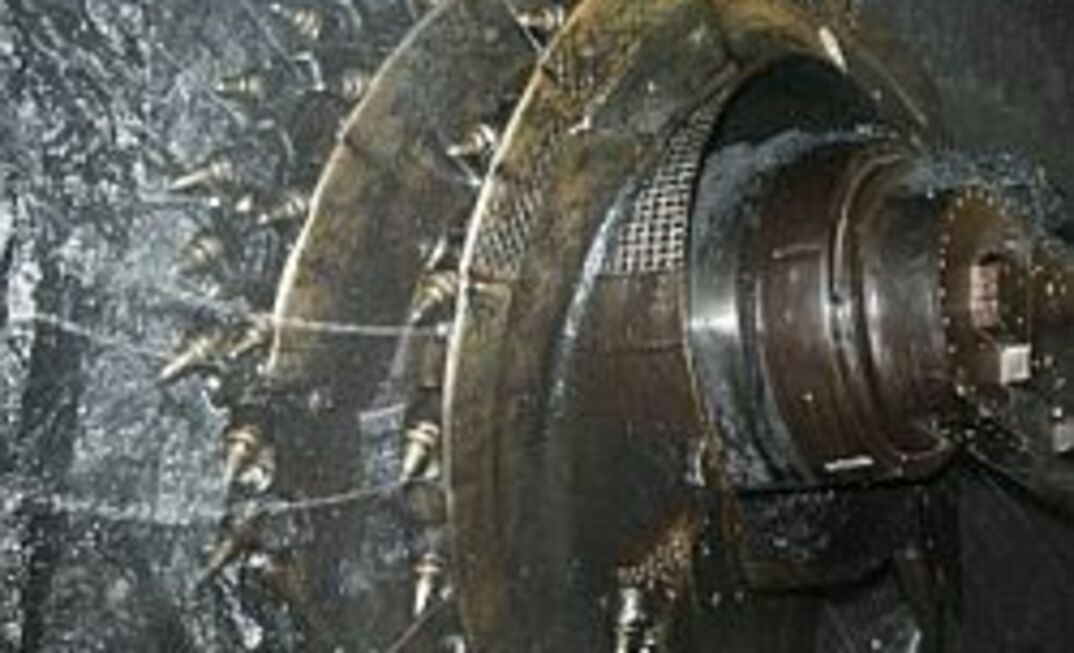Published in June 2005 Australian Longwall Magazine
Many Australian mines have upgraded equipment over the past six years â the perfect opportunity to change and improve cutting sequences. So why has there been very little change? Is it a lack of understanding about the efficiencies that can be achieved using different cutting systems? Or is it simply a case of sticking with what a mine knows best?
âMining sites are not places where change comes easily. If a cutting system has been used at a site for many years, it is rare that it is changed, even though seam conditions change, mining orientation changes, shearer and conveying capacity change and more,â longwall and mining consultant Andrew Rutherford said.
The basic method of cutting coal since longwall mechanisation commenced in the 1950s has been Bi-Directional (Bi-Di) and Uni-Directional (Uni-Di) cutting. Today, Australia mines are evenly split between the two, with a lone four mines adopting the half web system full-time. To see which mines are using what, click here.
Adoption of a particular method is usually related to a number of factors including length of face; shearer speed in cut and/or flit modes; seam height; coal strength; dust and environment; cleat direction; equipment design; shearer power; drum design; AFC capacity; belt capacity; and poor web depth per shear and lumps on the AFC.
To view the benefits and difficulties of different cutting systems
According to Rutherford, traditionally it was always considered better to go Bi-Di in face lengths over-180m because of the maximum haulage speed that could be achieved with older designed shearers. However, times have changed.
âShearer power has more than doubled, and the haulage power and speed available has changed the advantages of Bi-Di on long faces to a greater length. For Bi-Di to be more efficient, a face length needs to be in excess of 230m, and the environmental aspects and conveying capacity would possibly make this even greater,â Rutherford said.
In the past, thin seams have always used Bi-Di, as coal loaded on the Uni-Di flit run did not make it efficient. Rutherford said this had also changed and a balanced output could be achieved using a variable web system.
One area that had remained consistent was the use of Uni-Di for thick seams - conveying and shearer capacity and design had not been capable of cutting the coal in a single pass at more than 4m. However, Rutherford advised variable web systems now allowed cutting volume to be matched to the conveying capacity more closely, improving belt loading and allowing increased haulage speeds.
Of paramount importance is the careful match of equipment design to cutting method. Some equipment is more flexible in design, can accommodate different sequences more readily, and therefore lends itself to change.
âWhen purchasing new equipment, it is important that a review of the cutting method is used to identify potential benefits that may be introduced by new equipment. Not enough work is done in this area and efficiencies are being lost,â Rutherford said.
He said it was possible to modify equipment to make it more useful in variable web cutting. The cost can vary greatly depending on the age of the equipment and the control system in use and the source of the updated equipment. âThe cost of equipment upgrades is one reason why some mines have not moved to other cutting systems. This should not stop mines from doing analysis of their current systems,â he said.
One of the keys to getting the most out of a cutting sequence, Rutherford believes, is flexibility.
âThere is nothing wrong with changing from one cutting sequence to another, as face conditions change.
âChanging systems can increase support density, allow better control of roof conditions and provide a more suitable work environment as face conditions change.
âOften this causes problems with the workforce as they must be trained, must fully understand the reasons for change and be willing to make that change. Often this can be disruptive to production; however, in the long term, may allow improved production, especially in difficult or extremely favourable conditions.â
Five cutting systems available to Australian longwalls include Bi-Di, Uni-Di backward snake, Uni-Di forward snake, Variable Web (Kaiser cut) and Variable Web (Uni-Di cut). Each of the systems can be used in different circumstances and provide efficiencies depending on the mineâs parameters.
âTo maximise the output per unit shift, analysis should be undertaken as to which is the most effective method to use for current conditions and equipment in use. As conditions change and equipment is updated, further reviews should be undertaken,â Rutherford said.
âAustralian coal companies must continue to improve output to meet the increasing demand from overseas. One way to do this is to analyse current system efficiencies.â
Rutherford said there had been no recent changes to output percentages related to cutting systems in use within Australia; however, of the four mines using variable web systems, increases between 15%-30% had been achieved on weekly output figures and at leat three mines had achieved record yearly production tonnages since the introduction of the system. All these mines use both Bi-Di and Uni-Di from time to time to control roof conditions and had whole-heartedly embraced flexibility.
âA review of the current system of mining, the equipment in use and future requirements, will in fact provide efficiencies for the mine, if only to provide a better understanding of what is currently in place. It will also give focus on where problems are occurring and identify any bottlenecks and allow designs for future equipment to be assessed for output and flexibility,â Rutherford said.
âEach system has its own benefits and downsides. The choice of which system is best suited to the mine will depend on mine conditions and equipment in use.â
























